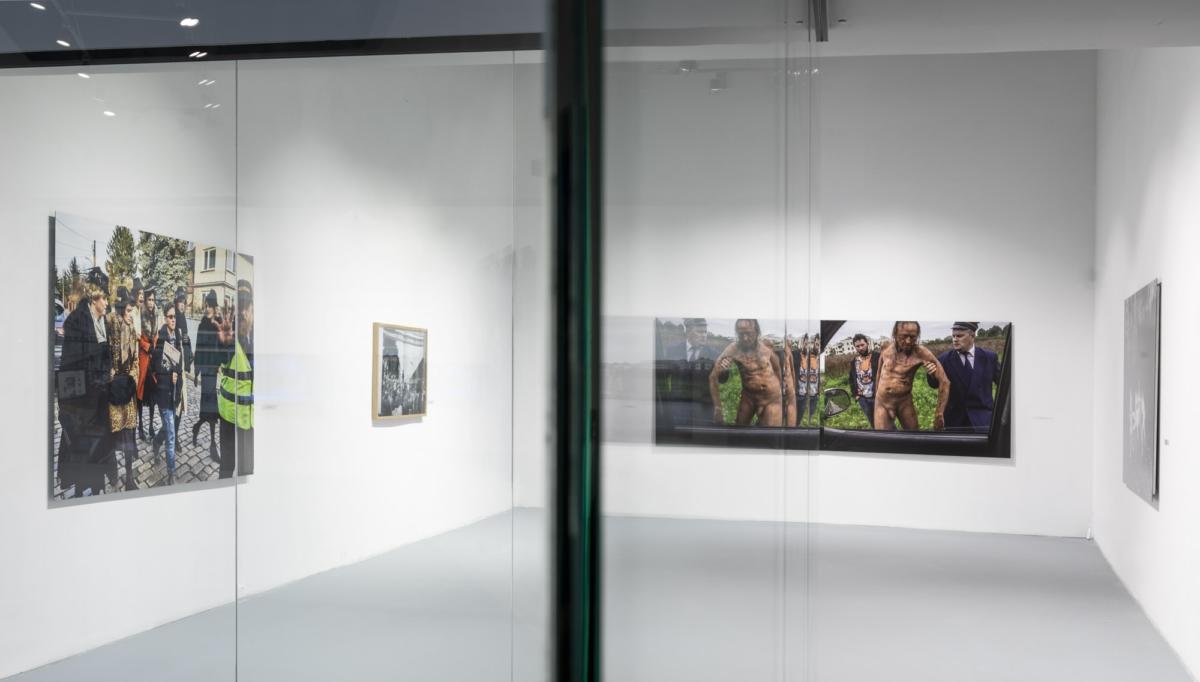[EN/PL] ‘The Latest Anti-Concept of Documentary Photography’ by Zbigniew Libera at MCSW Elektrownia
![[EN/PL] ‘The Latest Anti-Concept of Documentary Photography’ by Zbigniew Libera at MCSW Elektrownia](https://blokmagazine.com/wp-content/uploads/2020/08/zbigniew-libera-widok-z-wystawy-fot.-marcin-kucewicz-12-1200x800.jpg)
[EN]
The exhibition is partially an original retrospective. It is built of photographs including both the works from several years ago and the latest ones, including premiere photos, taken specially for this exhibition. In the artist’s intention it is a diagnosis of the current mental situation and sensitivity set in the context of liquid and changing collective memory, standard habits clashing with the dangers of easy manipulation of facts through their visual representations.
The exhibition is accompanied by a catalogue including the reproductions of the works and the photographic documentation of the exhibition in Radom. What takes up majority of the text part is the artist’s conversation with Jan Trzupek, exhibition curator.
Zbigniew Libera (b. 7 July 1959 in Pabianice, lives and works in Warsaw)
In 1982-1983 he was imprisoned for printing underground press. In the 80s he co-created the most interesting circles and enterprises of independent art in Poland, inter alia the Lodz zrzuta culture, music group Sternenhoch (with J. Truszkowski), magazine Tango, the milieu focused around Zofia Kulik and Przemysław Kwiek. At the beginning of the 2000s he co-created the Warszawski Aktyw Artystów and two art clubs: Baumgart/Libera, and then (together with Mariola Przyjemska and Tomasz Kurzyca) Aurora. He is engaged in the activity of the Civic Forum of Contemporary Art whose activity concentrates on the problems of artists, their social and material situation.
Libera is considered a foremost representative of the trend of critical art. In his works he analyzes and criticizes accepted conventions, mass culture, traditional models of education, he addresses the issues of media manipulating reality. Libera’s photographs and films of the 1980s, among others Somebody Else, Hermaphrodite, Intimate Rituals, Mystic Perseveration, How to Tame Little Girls were a decade ahead of the wave of ‘body art’. In the mid-90s he starts to make Corrective Instruments – objects which are transformations of already existing products, objects of mass consumption, inter alia: Universal Penis Expander or Body Master. A Play Set for Children under 9. He designs transformed toys, works exposing the mechanisms of upbringing, education and cultural drill, of which the most famous is Lego. Concentration Camp, Ken’s Aunt, You Can Shave the Baby. He creates art books, among others What Does a Liaison Officer Do together with poet, Darek Foks (published by Ars Cameralis, 2005), Trocki’s Ice Pick (pub. onestar press, 2006), Guy Innocent and Heartless (pub. Galeria Profile, 2008), Art of Liberation. Studium prasoznawcze 1988–2018 (pub. CSW Zamek Ujazdowski, 2019).
Since the beginning of the 2000s he has been mainly dealing with photography, and in particular the specificity of press photography, the ways media shape our visual memory and manipulate the image of history, e.g. series of Works Masters and Positives. In recent years he has also made large format photographs, for instance Mother, History Lesson, The Exodus of the People from the City, The First Day of Freedom, Polish Hospitality.
He is also a film director. Libera graduated from the Andrzej Wajda Film School and made a feature film Walser (premiere in 2015). He collaborates with theatre directors: Krzysztof Warlikowski (African Tales by Shakespeare in the Nowy Theatre in Warsaw), Magda Szpecht (The Possibility of an Island based on M. Houellebecq’s text at the TR Theatre in Warsaw), Katarzyna Kalwat (Grotowski Non-Fiction, at the Kochanowski Theatre in Opole and Współczesny Theatre in Wrocław) as well as Maja Kleczewska (Rage, based on E. Jelinek’s text at the Powszechny Theatre in Warsaw). That spectacle won the Silver Lion award at the theatrical festival in Venice in 2016, now in her direction Hamlet based on W. Shakespeare + H. Mueller at the Polski Theatre in Poznan and Berek at the Jewish Theatre in Warsaw.
Libera was also the curator of art exhibitions, e.g. An Artist in the Days of Hopelessness at the BWA Awangarda in Wrocław, It Is Not My Fault that the Sculpture Rubbed on Me at the Królikarnia Museum, division of the National Museum, in Warsaw. He exhibited his works in many individual and group exhibitions, inter alia at the 45 Biennale di Venezia, the Museum of Contemporary Art in Chicago, MUMOK in Vienna, Zachęta in Warsaw, the Jewish Museum in New York.
He is also involved in education; in 2006 he gave an honorary lecture within the framework of Annual Copernicus Lectures at the Michigan University in Ann Arbor (USA) as well as conducted a short course at the art faculty there; in 2008-2009 he conducted the Open Form Studio at the Academy of Fine Arts (AVU) in Prague, in 2017 he lectured at the Theatre Academy in Warsaw. In 2013-2016, together with Aleksandra Panisko he made an over 50-part series of programmes for TVP Kultura titled Libera – A Guide to Art.
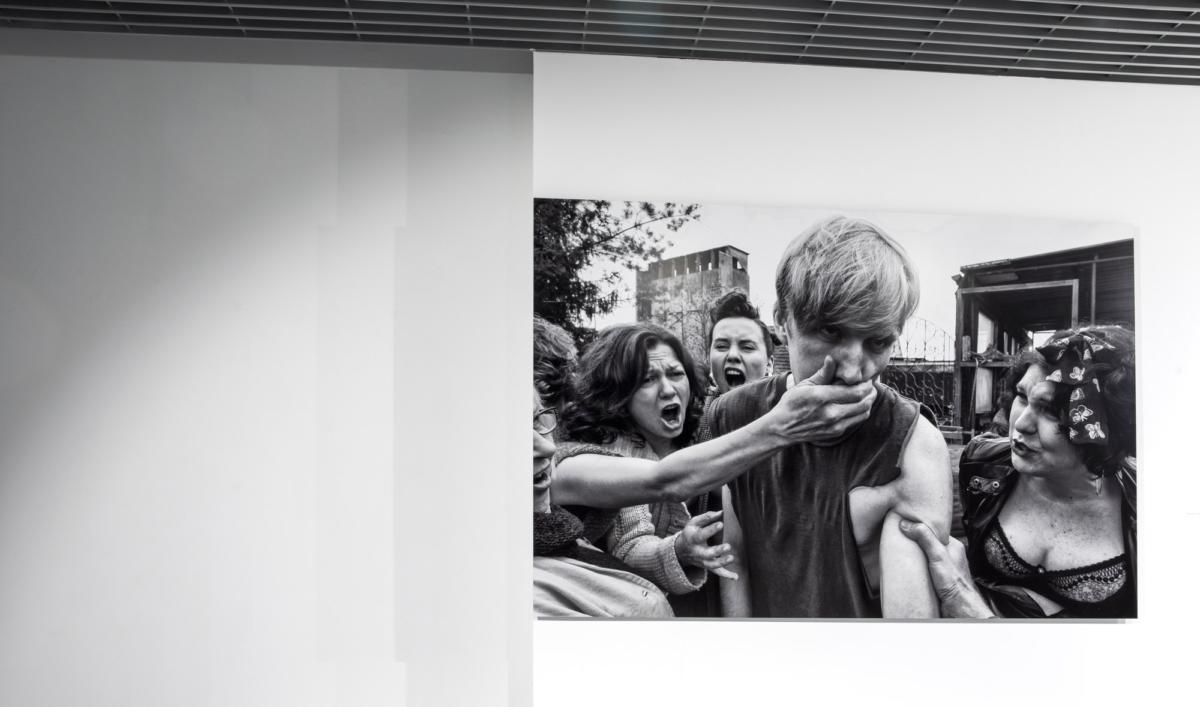

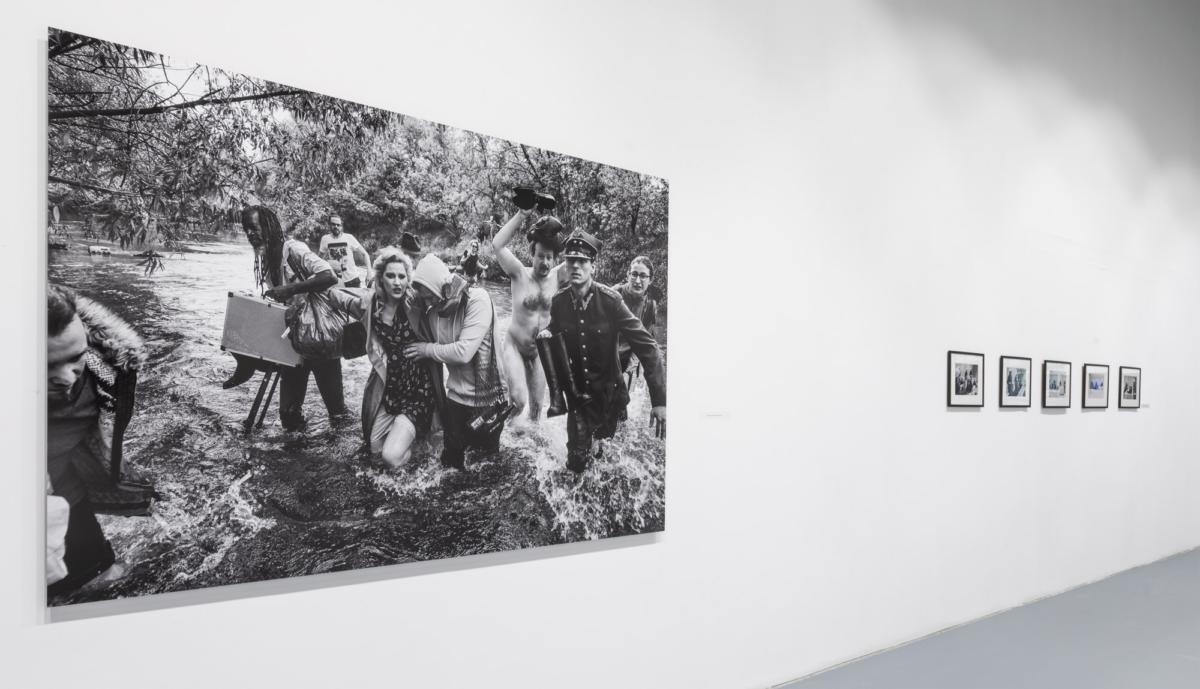
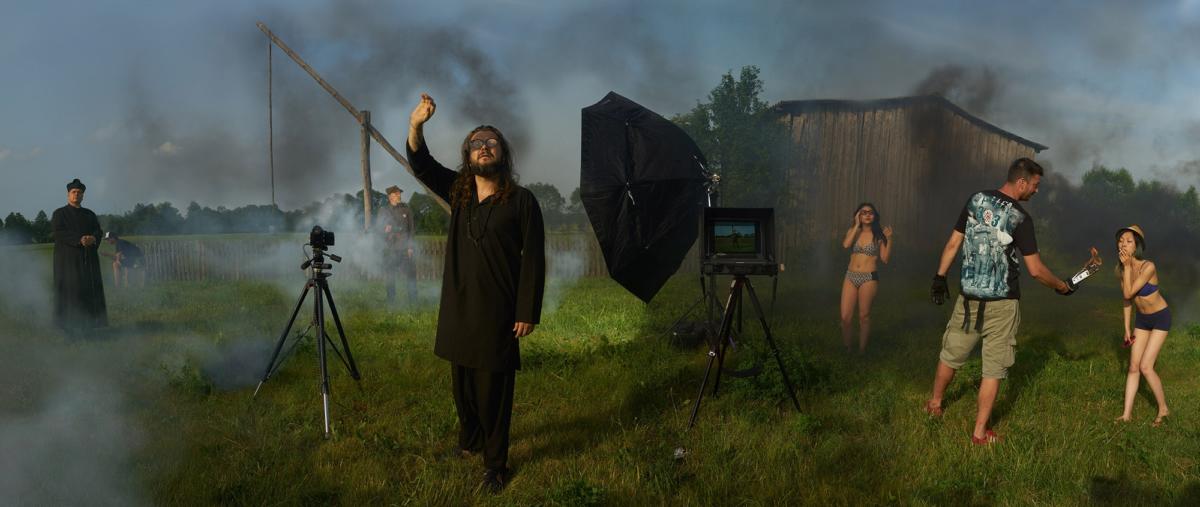
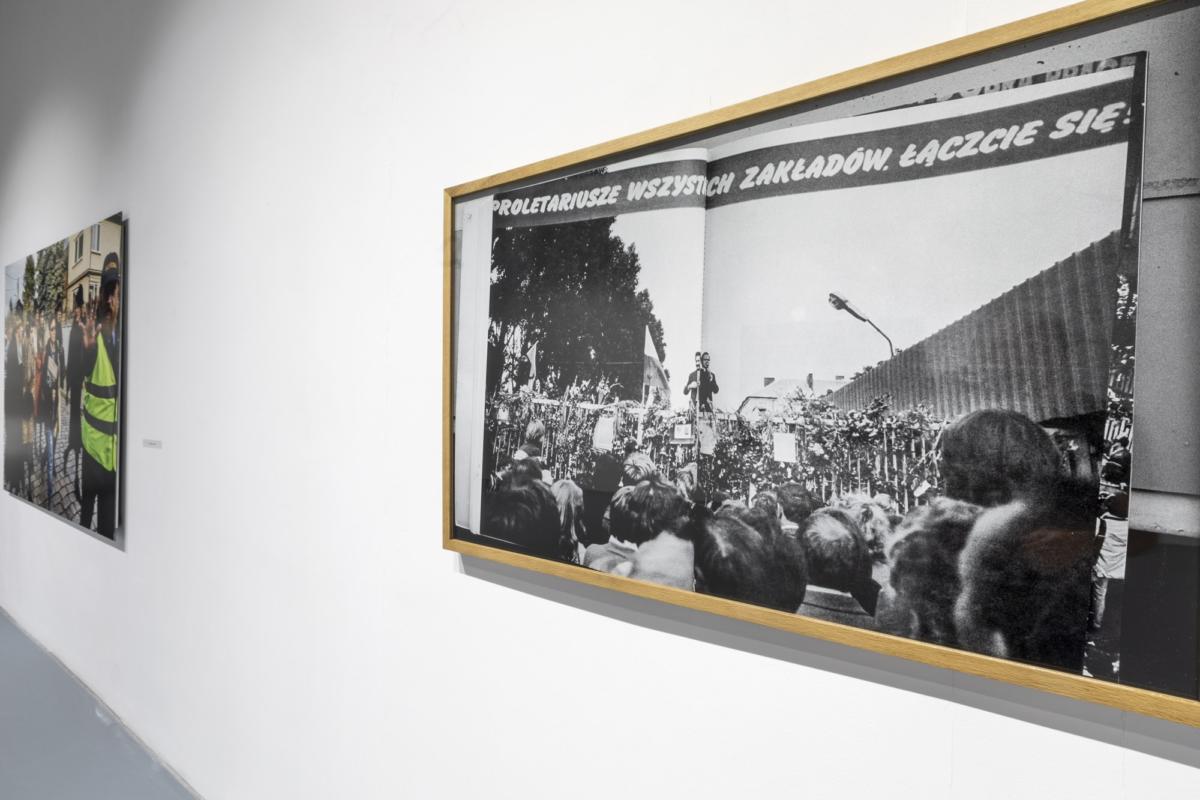
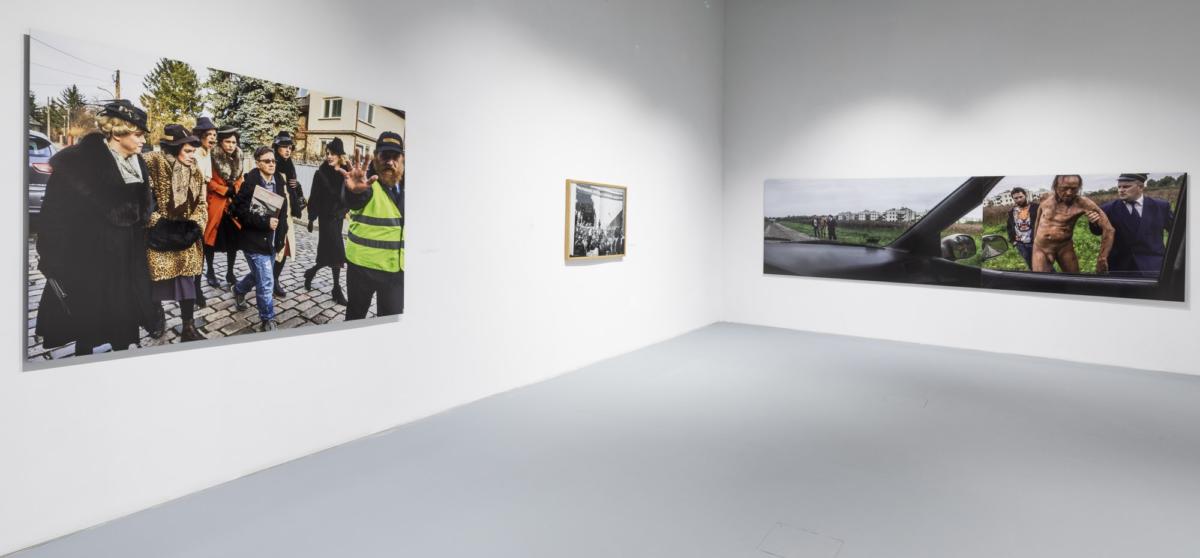
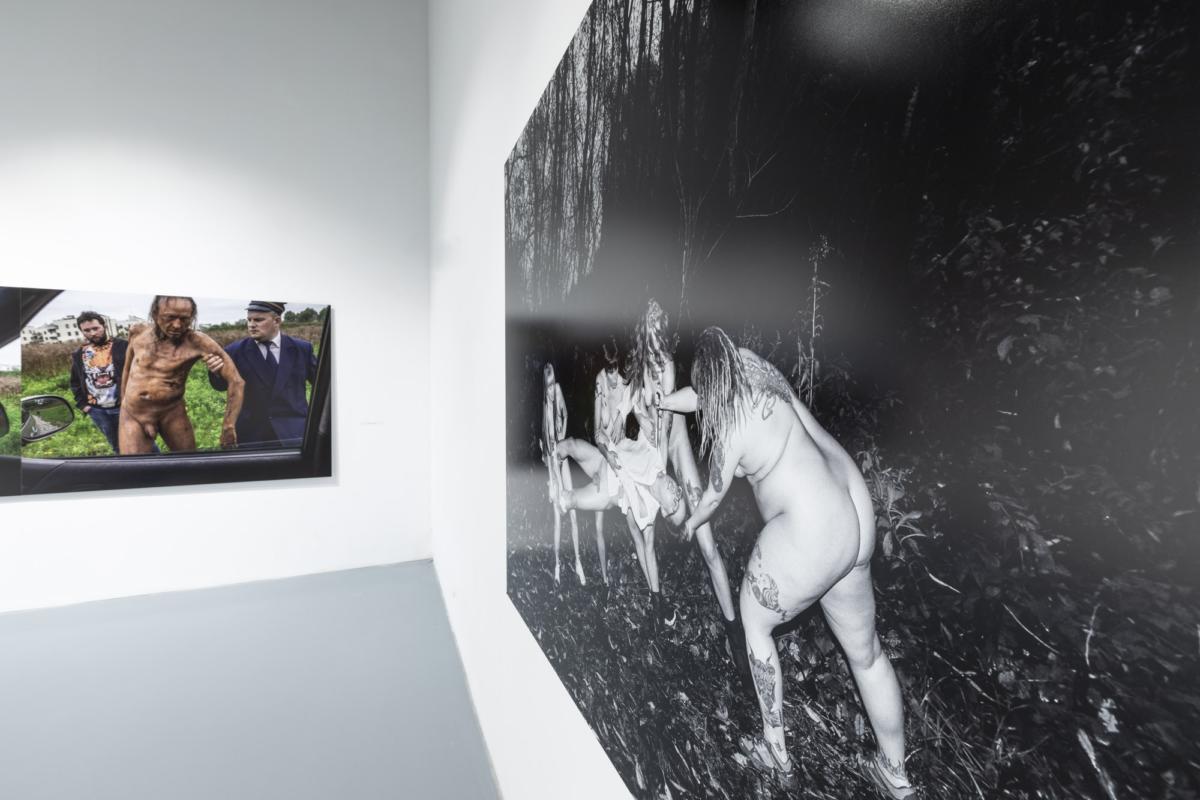
[PL]
Wystawa ma częściowo charakter autorskiej retrospektywy. Zbudowana jest z fotografii obejmujących zarówno utwory sprzed paru lat, jak i najnowsze, w tym premierowe, zrealizowane specjalnie na tą wystawę. W zamyśle autora jest diagnozą aktualnej sytuacji mentalnej i wrażliwości osadzonej w kontekstach płynnej i zmieniającej się zbiorowej pamięci, standardowych nawyków zderzających się z niebezpieczeństwami łatwego manipulowania faktami przez ich obrazowe przedstawienia. Wystawie towarzyszy katalog zawierający reprodukcje dzieł i dokumentację fotograficzną z aranżacji wystawy w Radomiu. Zasadniczą część tekstową stanowi rozmowa artysty z kuratorem wystawy Janem Trzupkiem.
Zbigniew Libera (ur. 07.07.1959 w Pabianicach, mieszka i pracuje w Warszawie). W latach 1982–1983 był więziony za druk prasy podziemnej. W latach 80. współtworzył najciekawsze środowiska i przedsięwzięcia sztuki niezależnej w Polsce, m. in. łódzką kulturę zrzuty, grupę muzyczną Sternenhoch (z J. Truszkowskim), czasopismo „Tango”, środowisko skupione wokół Zofii Kulik i Przemysława Kwieka. Na początku lat 2000. współtworzył Warszawski Aktyw Artystów i dwie klubokawiarnie artystyczne: Baumgart/Libera, a następnie (wraz z Mariolą Przyjemską i Tomaszem Kurzycą) Aurora. Zaangażowany w działalność Obywatelskiego Forum Sztuki Współczesnej, którego działalność koncentruje się na problemach artystów, ich sytuacji społecznej i materialnej.
Libera uznawany jest za czołowego przedstawiciela nurtu sztuki krytycznej. W swoich pracach analizuje i krytykuje przyjęte konwencje, kulturę masową, tradycyjne modele wychowania, porusza kwestie manipulowania rzeczywistością przez media. Fotografie i filmy wideo Libery z lat 1980., m. in. Ktoś inny, Hermafrodyta, Obrzędy intymne, Perseweracja mistyczna, Jak tresuje się dziewczynki wyprzedziły o dekadę falę „sztuki ciała”. W połowie lat 90. Zaczyna tworzyć Urządzenia korekcyjne – obiekty będące przetworzeniem istniejących już produktów, przedmiotów masowej konsumpcji, m. in. Universal Penis Expander czy Body Master. Zestaw zabawowy dla dzieci do lat 9. Projektuje także przetworzone zabawki, prace odsłaniające mechanizmy wychowywania, edukacji i tresury kulturowej, z których najgłośniejsze to: Lego. Obóz koncentracyjny, Ciotka Kena, You Can Shave the Baby. Tworzy książki artystyczne, m. in.: „Co robi łączniczka” wraz z poetą Darkiem Foksem (wyd. Ars Cameralis, 2005), „Trocki’s Ice Pick” (wyd. onestar press, 2006), „Guy Innocent and Heartless” (wyd. Galeria Profile, 2008), Art of Liberation. Studium prasoznawcze 1988–2018 (wyd. CSW Zamek Ujazdowski, 2019).
Od początku lat 2000 zajmuje się głównie fotografią, a szczególnie specyfiką fotografii prasowej, tym jak media kształtują naszą pamięć wizualną i manipulują obrazem historii np. serie prac Mistrzowie i pozytywy. W ostatnich latach wykonuje także fotografie wielkoformatowe, jak np. Matka, Lekcja historii, Wyjście ludzi z miast, Pierwszy dzień wolności, Polska gościnność.
Jest też reżyserem filmowym, ukończył Mistrzowską Szkołę Reżyserii Filmowej Andrzeja Wajdy. Zrealizował film fabularny pt. „Walser” (premiera 2015). Współpracuje z reżyserami teatralnymi: Krzysztofem Warlikowskim („Afrykańskie opowieści wg Szekspira w Nowym Teatrze w Warszawie), Magdą Szpecht („Możliwość wyspy” wg tekstu M. Houellebecqa w Teatrze TR w Warszawie), Katarzyną Kalwat („Grotowski non-fiction” w Teatrze im. Kochanowskiego w Opolu oraz Teatrze Współczesnym we Wrocławiu) oraz Mają Kleczewską („Wściekłość” wg tekstu E. Jelinek w Teatrze Powszechnym w Warszawie). Spektakl ten zdobył nagrodę Srebrnego Lwa na festiwalu teatralnym w Wenecji w 2016 roku, zaś obecnie w jej reżyserii „Hamlet” wg W. Shakespeare + H. Muller w Teatrze Polskim w Poznaniu oraz „Berek” w Teatrze Żydowskim w Warszawie.
Był także kuratorem wystaw artystycznych, jak np. Artysta w czasie beznadziei w BWA Awangarda we Wrocławiu, To nie moja wina, że ta rzeźba się o mnie otarła w Muzeum Narodowym, oddział Królikarnia w Warszawie. Wystawiał w ramach wielu wystaw zbiorowych oraz indywidualnych, m.in. na 45 Biennale di Venezia, w Museum of Contemporary Art w Chicago, wiedeńskim MUMOK, warszawskiej Zachęcie, Jewish Museum w Nowym Jorku.
Zajmuje się także edukacją; w roku 2006 honorowy wykład w ramach Annual Copernicus Lecture na Uniwersytecie Michigan w Ann Arbor (USA) oraz tzw. mini kurs na tamtejszym wydziale artystycznym, latach 2008–2009 prowadził Studio Formy Otwartej w Akademii Sztuk Pięknych (AVU) w Pradze, w roku 2017 wykładał w warszawskiej Akademii Teatralnej. W latach 2013–2016 zrealizował we współpracy z Aleksandrą Panisko ponad 50-odcinkowy cykl programów dla TVP Kultura, pt. Libera – przewodnik po sztuce.
Imprint
| Artist | Zbigniew Libera |
| Exhibition | The Latest Anti-Concept of Documentary Photography |
| Place / venue | MCSW Elektrownia, Radom |
| Dates | 26 June – 21 August 2020 |
| Curated by | Jan Trzupek |
| Website | www.mcswelektrownia.pl/ |
| Index | Jan Trzupek MCSW Elektrownia Zbigniew Libera |



